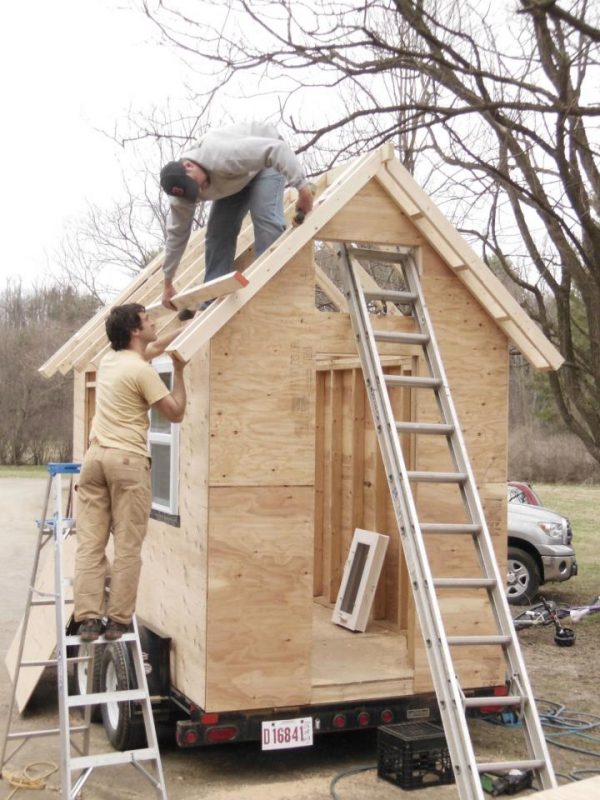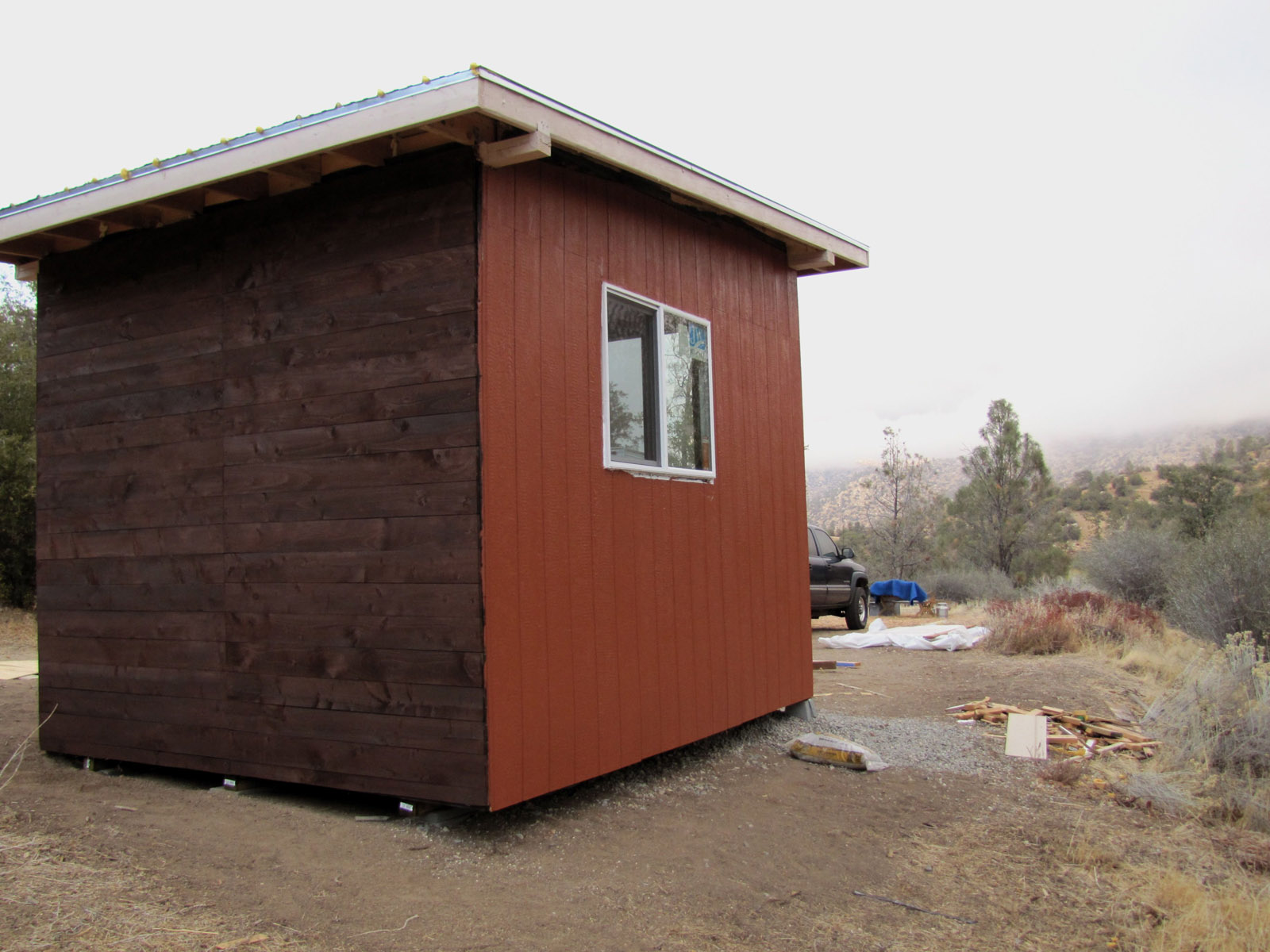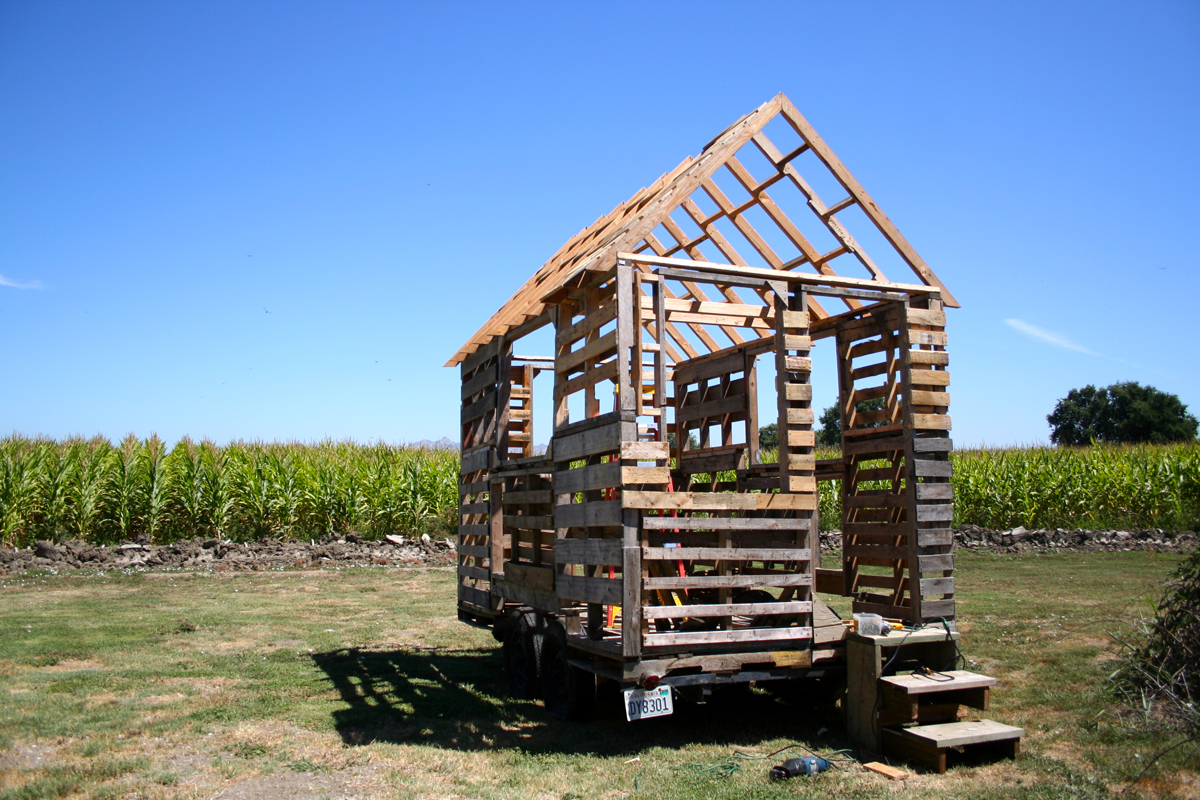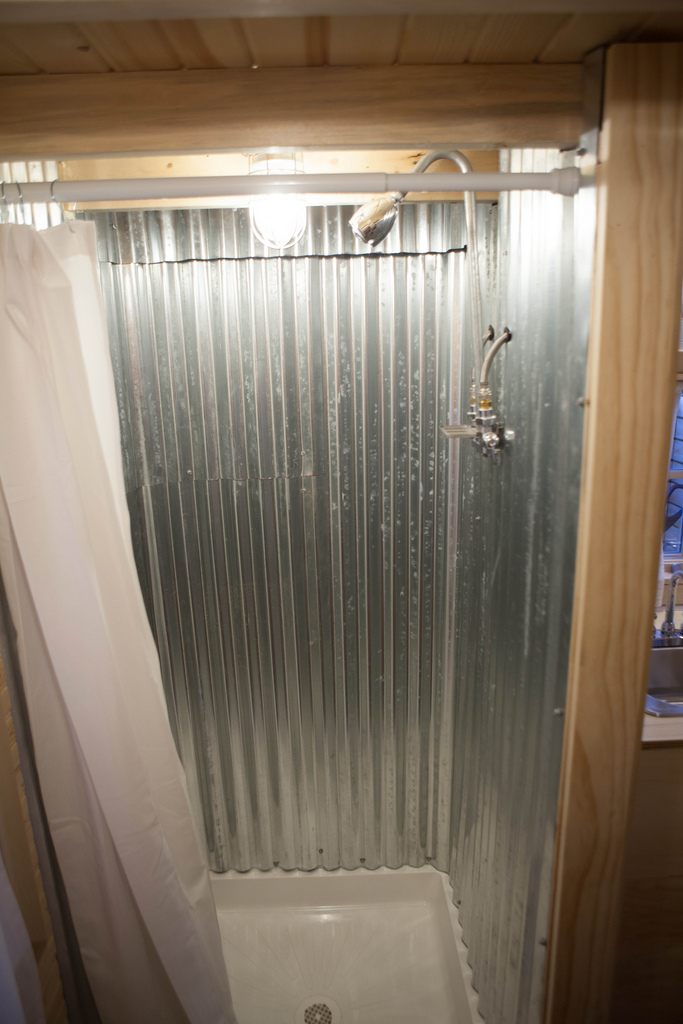Tiny House Raffles & Other Fund Raising Ideas

The students at Hilltop Montessori School in Brattleboro, Vermont were given the opportunity to build a tiny house. The house was then raffled-off which raised $17,000 for the school. The whole project was so successful that the school is planning another tiny house raffle.
The fund raising idea came from a school parent, Chad Farnum, the owner of a local business called Farnum Cellulose Insulators (see more photos on their Facebook page). Chad’s crew helped show the kids how to use tools safely while building the house. As you might imagine, the tiny 6′ x 12′ tiny house is well-insulated, features a sleeping loft, small kitchen & sink, toilet, and small living space.
It sounds like the whole project was a win-win all the way around. The kids won by learning hands-on skills while having fun, the school won by raising a bit of money while building community, the sponsors won by spreading the word of their businesses while helping out their school, and one winner won a tiny house! It’s also a great example for how barn (or tiny house) raising can bring a community together.
…continues after the photos.
…and while on the topic of creative fund raising ideas for schools, I’ve got a few more to share.
1 – Accept Intellectual Property Donations & Build a Digital Endowment
An intellectual property donation could be anything from a poem, to a book, to a piece of art. These days authors and artists don’t need publishers and galleries to connect with people that love their work – they just need to build a following through social media connections. It’s a win-win where buyers and sellers connect directly and eliminate the middle man.
Digital products are a natural for the Internet, but with the availability of low-cost on-demand publishing virtually anyone can publish a book, art print, CD, or DVD. The creators simply provide publishable electronic files and the on-demand publishers, like CreateSpace.com, take care of the sales fulfillment, printing, and shipping of the products. The creator of the work is left with the job of marketing the product.
So now imagine inviting your school’s community to donate intellectual property to be offered though the school’s new on-demand publishing channels. These could be things like music albums, writings, or artwork. Over time the revenue from donated creative work would grow and augment any fundraising efforts. You might also think of it as building an intellectual property digital endowment.
It also teaches everyone in the community an important lesson – that we can all be rewarded by the contributions we make to our community and that as a whole – we’re stronger together. In other words, it’s not just about monetization – it’s about working together as a community with the goal of making the community stronger.
2 – Encourage Faculty & Class Projects that Contribute to the Digital Endowment
Introducing faculty members to these publishing methods could provide opportunities for the school as well as the teachers themselves. The exposure and notoriety of becoming a successful published author, musician, or artist can open new doors for them while naturally contributing to the school.
Teachers could also lead class projects where the students become the makers of creative works. These could be children’s books conceived, written, and illustrated by the kids or collections of short stories or art. In this example the teacher would lead the students through the steps needed to complete a book – once a difficult task – now made easy with desktop publishing and on-demand printing.
3 – Encourage Faculty & Community Blogging
Community outreach can be tough, especially for a private school. One way to open the virtual doors is to start sharing more online. Through their online posts, the accomplishments and strengths of the school could become more transparent to the outside community – like providing an online open house.
Parents, alumni, and others in the school’s community could also participate by sharing their learnings and experiences through blogging. The more information presented about the school from difference sources, the better understanding of the school the outside community will get.
4 – Run Crowdfunding Campaigns for Campus Improvements
Donations are so last century. Crowdfunding is the current preferred fund raising method on the Internet, and it’s growing. The croudfunding industry will expand from $2.7 billion in 2012 to a projected $5.1 billion in 2013 (source).
It works because people like getting something for their money. So instead of just asking people to give you money, give them a reward them for backing your project. Reward levels are typically valued at the retail value of the item – so from a business perspective it’s like locking in your first customers and getting paid before the products are developed. So in a very real way it’s like going to the public for venture capital.
Two of the top crowdfunding websites are Kickstarter and Indiegogo. These competing websites differentiate themselves by offering slightly different options for campaign originators. For example Kickstarter doesn’t collect funds from backers until the goal is reached – and if the goal is not reached the campaign originator gets nothing. Kickstarter is also more restrictive in the types of campaigns that can be listed – but it’s the most successful crowdfunding site out there so something must be working. Indiegogo allows more types of fund raising efforts, and the campaign originator gets whatever they collect. The draw back is that you might get lost in the crowd since there are so many more campaigns and not all are as well presented as those on Kickstarter.
Selecting the right venue for a school fun raising effort would really depend on the specific campaign. But in any case, putting together a strong set of backer rewards is the key to success – which is where digital and on-demand printed products come into play. These kinds of rewards are easy to replicate and typically allow for more accessible participation levels.
5 – Art Shows with Print on Demand Art Print Sales Options
While I may make my living online in design, I was really first an artist – a potter specifically. In high school and college we put on many art shows and sometimes were able to offer our work for sale. Now fast-forward to today – imagine the school art show with QR codes next to items that are available as prints. The buyer would scan the QR code with their phone and be taken to an order form to complete the purchase. A portion of the proceeds could go to the digital endowment.
Some students may begin to feel pressure to make what sells – which is a very real personal conflict many artists face. In a nutshell, many of us feel forced to choose between making what we love and making what sells. Many choose to make money due to financial pressures and find themselves unhappy. Others discover that we can make what we love if we can connect with people that love it too. This seems to be a good lesson to learn while still in school when the external financial pressures aren’t so high.
But it’s also important to say that encouraging students to sell their artwork may only be appropriate after the student has reached a certain level of maturity – since a young or novice artist may find the monetary aspect overly distracting.
6 – Photos, Illustrations, and Video through Stock Photo Websites
Another option for making digital artwork available for sale is to leverage existing services that help connect media buyers with media producers. Websites like iStockPhoto and Shutterstock invite photographers, illustrators, and videographers to post their work for sale and pay them a royalty in return.
If the school received a lot of these kinds of digital contributions they could setup an account at one of these sites and make them available to media buyers.
7 – Digital Productions of Student/School Performances
In high school I didn’t participate on stage in dramatic productions – but worked on the light & sound crew. I guess I was an artistic geek from the start, but I digress. There are many different opportunities for students to participate in school performances from costume design, to performing on stage, to light crew, and these days in capturing the performance on video.
So school performances also provide an opportunity for young student filmmakers to record, light, edit, and produce recorded versions available later on DVD. The entire cast and crew would be credited much like a movie, and add it to the school’s digital endowment. This would also work very well for audio recordings.
8 – Software and Digital Designs Developed by Students & Alumni
Apps – Mobile device usage continues to grow rapidly – and mobile application design & development is a booming business. It won’t be long before many high schools offer classes where students learn to design & code mobile and desktop applications. Encourage them to take the last step and publish their applications to app stores, and consider adding these offerings to the school’s digital endowment.
Animations – The same can be said of animations and other forms of digital art. If your school is beginning to introduce high school students to the nuts and bolts of animation, encourage them to publish their work along with the school’s other digital offerings. These can be things like short animated films.
3D Printing – Also along these lines is the emerging industry of digital printing. This is where designers send 3D drawings off to be printed in three dimensions by a printer that prints objects. If your school begins to offer classes in 3D drawing & drafting, consider challenging the students with making 3D printed items. Take a look at Shapeways to see the kind of things designers offer buyers that can be printed on demand.
9 – Partner with Retailers as Affiliates
Many retailers offer affiliate programs where referrals earn a referral fee. For items sold via the web, everything is tracked online and the affiliate relationship is virtually invisible to the buyers. If schools and local businesses were to setup affiliate relationships, everyone wins. The buyers win by learning about local businesses they may want to patronize. The businesses benefit by expanding their exposure into their school’s wider community. The school benefits by connecting members of their community and earning a small referral fee too.
10 – Raffle or Auction Things You Make
After seeing the tiny house example at the beginning of this post, raffles and auctions are clearly effective but often require someone like business owner Chad Farnum to sponsor the project. If no sponsor is available, try a crowdfunding campaign to raise the cost of materials. Use items created during the project as the backer rewards or offer items from your digital endowment.
For example if you want to try to build a tiny house first challenge your students with the design, which can turn into a set of plans that’s offered as a reward. Then be sure to have your young videographers record the whole process and produce a DVD that’s offered as a reward. Be sure to include a reward level for the purchase of the tiny house itself. Once the whole project is complete all the digital work would be made available through the school’s digital endowment program and continue to help fund the school through the years.
Conclusion
Traditionally private schools get money from four sources: tuition, donations, grants, and endowments. The first three are old-fashion methods of giving and only the first rewards the contributor with something in return – an education for a child. But if the school adopts some of this new thinking and leverages the power of social media, the production of electronic media, and on-demand printing a new world of community building and revenue streams open up.
These ideas presented here could work for almost any non-profit organization, but are specifically tailored for schools rich in the arts. Some of the ideas above might not be a good fit for your school or organization, but might help spark a little brain-storming. At the very least consider the first step and invite intellectual property donations. Then move carefully forward as opportunities surface and comfort levels allow.
Lastly, if you’re looking for ways of augmenting your own personal income, I encourage you to explore any of these ideas and modify them to work for you. Be sure to keep an eye out for those options that can be implemented with very low risk or capital investment. Anytime you hear something that sounds too good to be true, grab hold of your wallet because someone’s probably trying to pick it. What I’ve described above can be done for virtually no money, just a lot of fun creative work.









